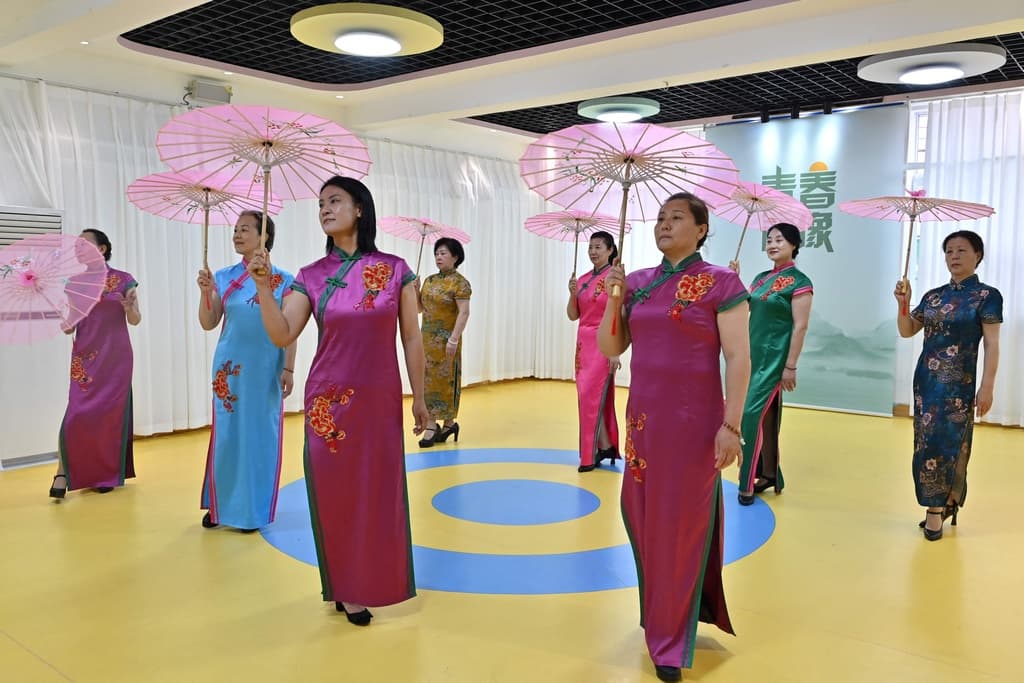Thousands of kindergartens have been closed in China. Others have changed direction to instead engage in activities for the elderly. Two clear signs of the population crisis threatening the country's future as the working-age population decreases.
In the coming decades, hundreds of millions of Chinese will become old. Already, there are significantly more deaths than births in the giant country, a trend expected to continue for decades to come. 2023 was the second year in a row that the number of inhabitants decreased in China.
As a result of the low birth rates, nearly 15,000 Chinese kindergartens were closed in 2023 alone, according to official Chinese statistics. Others have completely changed direction.
"Youthful Impressions"
In what was previously a kindergarten in the province of Shanxi in northern China, dancing to old-fashioned music is underway. Previously, small children ran around in the premises, which are now filled with a significantly older audience.
In the province, 78,000 more deaths than births were registered last year. Across the country, with approximately 1.4 billion inhabitants, the population decreased by over two million.
After my kindergarten was emptied, I thought about how to best utilize it, says Principal Li Xiuling.
The kindergarten in the provincial capital Taiyuan was founded in 2005 and once had 280 children enrolled. Last year, it closed to reopen in December under the name "Youthful Impressions", a recreation center for people who have reached retirement age. Here, around 100 adults engage in activities such as music, dance, and learning to walk with canes.
They come here to fulfill some of the dreams they had when they were young.
20 percent over 60
A model instructor teaches women with impeccable hairstyles to walk in a classroom, dressed in traditional clothes and carrying pink parasols.
In another room, participants sit in a semicircle playing African drums to socialist songs. There are still signs left from the previous activities, with bunk beds for rest and colorful walls.
Yan Xi was previously a kindergarten teacher but now leads groups of retirees. But the new students don't behave like the previous ones, she notes.
Small children believe whatever you say, but the elderly... they have their own way, she says.
According to official statistics, nearly 17 million more people in China turned 60 or older last year. This age group already accounts for more than 20 percent of the population, and the proportion is expected to rise to nearly a third by 2035, according to the analysis firm The Economist Intelligence Unit (EIU).
China's one-child policy, which began in 1980, was introduced to curb the country's rapid population growth. The policy meant that couples who had more than one child often lost social benefits and had to pay fines. An exception has been minority groups, who have been allowed to have more children. Later, two children were also tolerated in rural families if the first child was a daughter.
The one-child policy has led to selective abortions due to gender and the murder of small girls, as many couples have preferred sons.
In the early 2000s, it became clear that low birth rates would lead to a steady increase in the proportion of elderly in China, while the number of Chinese of working age decreased. The change was predicted to be a major burden on the economy.
In the fall of 2015, it was announced that couples would be allowed to have two children, and since 2021, it has been allowed to have three children. However, the abolition of the one-child policy has not led to an increase in the number of births – in recent years, the birth rate has instead decreased. The explanations, according to analysts, include that it has become common to only have one child, combined with high costs associated with having children.
China had around 1.4 billion inhabitants in 2022 and is, after India, the world's second-most populous country.





